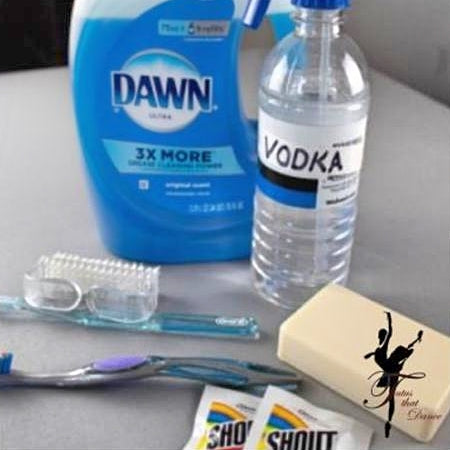
Cleaning and Care of a Tutu
Share

PURCHASE ARTICLE HERE: https://tutusthatdance.com/collections/faq-articles/products/care-and-cleaning
WHEN BUILDING A TUTU GREAT CARE MUST BE TAKEN IN THE PLANNING STAGES TO CONSIDER THE CLEANING and CARE OF THE FINISHED GARMENT.
CARETutus require constant maintenance
They should be checked after each performance.
Check for:
- Any makeup, sweat stains, other areas that need cleaning.
- Rips, tears, any loose seams, threads, stones or trims.
- Check tacking, hoop, elastics and hooks/bars.
What is the use of the tutu? Is it going to be worn only a few times or expected to last many years with numerous wearing’s? Is it only to be worn by one dancer or shared?
If it is to last many years, you must be sure to use fabrics and embellishments that are compatible with the type of cleaning it will receive. If not, compatible they should be removable.
Will the tutu be hand washed? If so, have all the fabrics been prewashed, including the linings and notions? Cotton (most commonly used for linings) can shrink and distort bodice and basque if not preshrunk.
Will washing effect the look or feel of the fabric, will colors bleed?
If dry cleaning, are all fabrics, trims and glues dry cleanable?
Some glues are not washable; some are not dry cleanable. If using glue to attach sequins or stones, be sure to keep in mind how the costume will be cleaned.
Some bodices may require different laundering than the skirts; they should be removable and treated separately
We suggest you do not clean any garments just before or during a performance. If any damage is done, you will need time to repair or replace. Allowing for it is always advised.
CLEANING A TUTU
- Both washing and dry-cleaning damage a tutu. Do so infrequently and with care.
- Try to spot clean areas rather than cleaning the whole costume
- Use a steamer to remove wrinkles and freshen a tutu. Irons should be used with great caution as too high of heat can melt netting, sequins, and damage delicate fabrics and trims.
- Always allow costumes to air dry between performances and before storing.
- Using a hair dryer can speed this up between performances
- Spray with vodka (straight or diluted with water) to remove odors and kill bacteria.
- Determine if all items are washable and colorfast. Including linings, fabrics, trims, glues, and stones.
- What is not washable, remove before laundering.
- Spot clean any marks or stains whenever possible.
- There are many products out there, use one appropriate for the fabric.
- There are also wipes that can be used for quick touch ups during performances.
- Determine what is and is not washable. Remove non-washables if needed.
- Spiral, steel boning, hooks and bars can rust over time. Removing when laundering helps but is not needed each time. Keep watch for any sign of rust.
- You may decide to remove the bodice from skirt and wash or clean separately
- Cleaning a bodice and crotch without removing the skirt can be done using a bucket or plastic trash can (mine is a 5.5 gallon).
- Add water and mild soap.
- Holding the tutu upside down, submerge the bodice, and basque into the water leaving the skirt to rest on top of your container.
- Press the crotch into the water and wash.
- Rinse with clean water in the same manner
- Hang to dry

Tutu skirts:
- Hoops covered with buckram (rather than plastic) will need to be removed to wash. With time hoops will rust and the buckram will disintegrate.
- When washing a tutu skirt wash in a bathtub, or small wading pool. Using cool water and mild soap. Thoroughly rinse then air dry.
- Try to maintain the shape of the skirt while laundering:
- Classical tutus--dry flat
- Romantics-- hang to dry
- Try to find a cleaner that is familiar with cleaning costumes and inform them of all known fibers, trims and glues used.
- Dry cleaning solvents may damage some sequins and stones, ASK first! Sending in some test garments is always advised. Find out their policy if items are damaged or missing, get it in writing.
FINAL THOUGHTS: Give clients a list of fabrics, trims and notions and if possible, list known fibers. It is also extremely helpful to give them small fabric samples of what has been used…these can be used to determine and test laundering methods on rather than testing on the tutu.
A sample CARE FORM is shown below. Sample items are listed in grey. A usable copy (Word format) is included with the purchased article.

